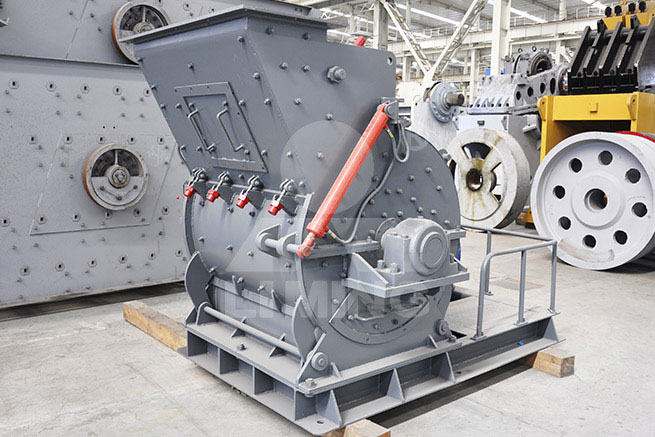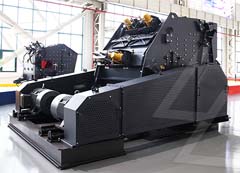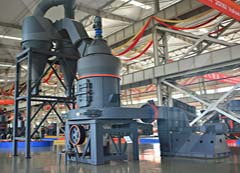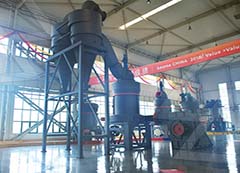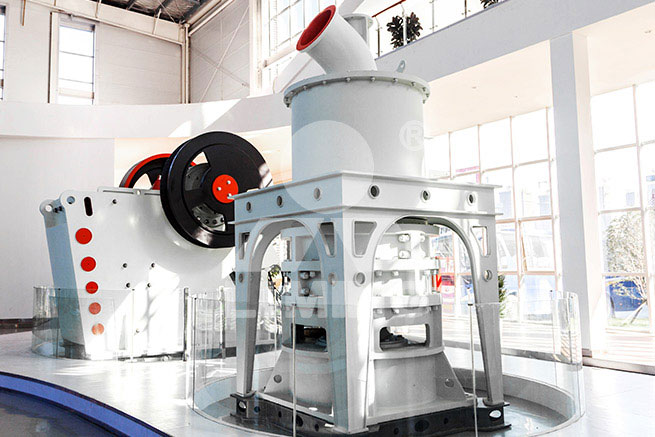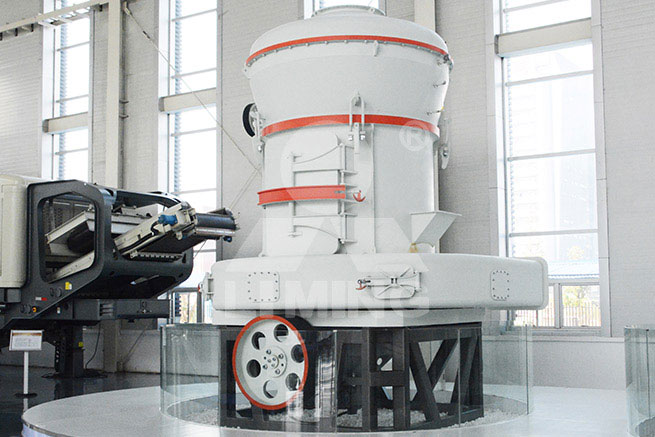impact of old clinker in cement grinding

CLINKER GRINDING IN CEMENT PRODUCTION
2019-2-21 · Earlier we considered a mixture of which materials is used in cement production. The base of this mixture is a clinker. In this article, we will consider
Read More

(PDF) Influence of the Clinker SO3 on the
This paper aims to clarify the influence of the clinker SO3 on the cement characteristics. The impact on the strength development rate and the level of
Read More

Effect of chemical composition of clinker on
1999-1-1 · Cement and Concrete Research 29 (1999) 531–535 Effect of chemical composition of clinker on grinding energy requirement M. Tokyay * Civil
Read More

The impact of cooling water types on the cement clinker ...
2018-9-1 · The area under study is El-Minia white cement plant which locates at Bani Khaled, Samalout, El-Minia Governorate. The plant includes industrial processes related to the production of white cement. It is using Nile water at different processes such as cooling clinker in the rotary cooler and at grinding cement through a ball mill.
Read More

The influence of Triethanol amine and ethylene glycol on ...
2019-1-24 · During the grinding of OPC clinker in lab ball mill, the grinding aids are added with the ratios 0, 0.03, 0.04 and 0.05 wt. % of the clinker with gypsum. A constant 10% of gypsum by weight of clinker has been added to each cement mixture with clinker factor 90%. A laboratory porcelain lab mill of 35liters was used for grinding. The
Read More

A Review On Environmental and Health Impacts Of
2016-5-25 · clinker cooler, crushers, grinders, and materials-handling equipment. Figure 1: Global Cement Production 1970-2050 (Source: International Energy Agency (IEA) These emissions are not only deteriorating air quality but also degrading human health. Emissions have local and global environment impact resulting in global warming, ozone
Read More

Cement and its effect to the environment: A case study
2009-4-27 · environmental impact due to cement production process in Srilanka. A case study of Puttalam Cement Company Ltd, (the only cement production facility that encompasses the entire production process) revealed that the production adopted the dry process, which includes supply of raw materials, clinker burning and grinding process.
Read More

Assessing the environmental impact of conventional and ...
2014-1-1 · Environmental impact of ordinary Portland cement. Portland cement is produced by first co-grinding a mixture of about 80% limestone and 20% clays. This is then calcined and subsequently burnt at temperatures reaching 1,450 °C. During the high temperature processing, the kiln conveys nodules of calcium and silicon oxides held together by a ...
Read More

Impact of free lime on grinding efficiency - Page 1 of 2
2011-8-8 · Re: Impact of free lime on grinding efficiency. All other factors being equal, low free lime clinker (hard burned) is generally harder to grind than clinker with higher free lime. This is due to physical changes in clinker mineralogy and porosity caused by over-burning rather than the presence of the free lime itself.
Read More

Environmental Impact of Cement | Geos
Environmental Impact of Cement. Cement is a fine gray powder used in the production of concrete and mortar. A total of 12 billion tons of concrete, 1 or approximately 3 billion tons of cement, 2 are used around the world each year.
Read More

Effect of chemical composition of clinker on grinding ...
Cement and Concrete Research 29 (1999) 531–535 Effect of chemical composition of clinker on grinding energy requirement M. Tokyay * Civil Engineering Department, Middle East Technical University, 06531 Ankara, Turkey
Read More

Intensification of Cement Grinding with Apply Grinding ...
Figure 1. Impact of grinding aids on grindability and strength of cement clinker based on: а) К-1; b) К-2 As seen from Fig. 1 investigation compounds of additive have ambiguous effect on process of grinding and hardening. Thus, greatest intensifying effect at grinding on clinker K-1 had compounds AI5, AI13-50 and AI10.
Read More

Characterization of Various Cement Grinding Aids and
Grinding aids (GA) are incorporated during comminution of clinker to reduce electrostatic forces, minimize agglomeration of clinker and SCM grains [142],
Read More

A Review On Environmental and Health Impacts Of
2016-5-25 · clinker cooler, crushers, grinders, and materials-handling equipment. Figure 1: Global Cement Production 1970-2050 (Source: International Energy Agency (IEA) These emissions are not only deteriorating air quality but also degrading human health. Emissions have local and global environment impact resulting in global warming, ozone
Read More

Impact of Hot Cement on the Concrete Mix
Impact of Hot Cement on the Concrete Mix. Hot cement describes clinker that has, through the process of grinding, gained additional energy stored in the form of heat. Once the clinker is ground, this hot cement is stockpiled in storage silos where the elevated temperature, especially in warm climates, is not readily abated.
Read More

What is Cement Clinker? Composition, Types & Uses - Civil ...
2022-2-10 · Clinker is a nodular material produced in the kilning stage during the production of cement and is used as the binder in many cement products. The lumps or nodules of clinker are usually of diameter 3-25 mm and dark grey in color. It is produced by heating limestone and clay to the point of liquefaction at about 1400°C-1500°C in the rotary kiln. ...
Read More

Portland cement clinker - Understanding Cement
Portland cement clinker - overview. Portland cement clinker is a dark grey nodular material made by heating ground limestone and clay at a temperature of about 1400 °C - 1500 °C. The nodules are ground up to a fine powder to produce
Read More

Impact of Alternative Fuels on the Cement
2017-1-24 · Cement manufacturing process basically includes quarry, raw meal preparation, preheating of raw meal, kiln, clinker cooling, grinding, storage and dispatch. Figure 1 shows a basic process flow of cement manufacturing. The basic chemistry of the cement manufacturing process begins with the decomposition of calcium carbonate (CaCO 3) at
Read More

Best energy consumption - International Cement Review
2015-2-16 · For cement grinding, the technology development away from ball mills has taken a different route. ... The impact of poor plant reliability upon overall electrical energy consumption is often under-estimated. In the kiln area, 100
Read More

Grinding - Cement industry news from Global Cement
2021-9-23 · Panama: Panamanian cement producers reused cooling water used in cement grinding at a rate of 88 – 100% nationally in 2020. The development is part of a concerted water conservation effort first launched by Argos Panamá. The La Estrella newspaper has reported that Cementos Panamá’s Quebrancha grinding plant reduced its water consumption by 88% in five
Read More

PRIMARY COMMINUTION IN CLINKER GRINDING PLANTS
PRIMARY COMMINUTION IN CLINKER GRINDING PLANTS VORZERKLEINERUNG IN KLINKERMAHLANLAGEN. The results of the investigations and experience described in this article show that the roller mill and the impact mill appear suitable for primary comminution in cement grinding plants.
Read More

What is Cement Clinker? Composition, Types & Uses - Civil ...
2022-2-10 · Clinker is a nodular material produced in the kilning stage during the production of cement and is used as the binder in many cement products. The lumps or nodules of clinker are usually of diameter 3-25 mm and dark grey in color. It is produced by heating limestone and clay to the point of liquefaction at about 1400°C-1500°C in the rotary kiln. ...
Read More

Reactions In The Cement Kiln Clinkering
Cement Production The Concrete Portal. The product of the kiln operations is called clinker The clinkering reactions involve conversion of mixtures of calcium carbonate and silica and alumina bearing components to a mixture of special. Get Price.
Read More

Use of coal as a fuel in cement plants and its impact on ...
2016-7-30 · increase in population, the need and use of cement is increasing with tremendous speed. Therefore new plants are being installed with a high speed. Portland cement is made by grinding clinker and gypsum together in the ratio of 95:5 by weight [3]. Clinker is made in a kiln and is composed mainly
Read More

Cement Milling - Understanding Cement
Cement milling is usually carried out using ball mills with two or more separate chambers containing different sizes of grinding media (steel balls). Grinding clinker requires a lot of energy. How easy a particular clinker is to grind ("grindability") is not always easy to predict, but large clusters of belite due to coarse silica in the feed ...
Read More

Impact of Alternative Fuels on the Cement
2017-1-24 · Cement manufacturing process basically includes quarry, raw meal preparation, preheating of raw meal, kiln, clinker cooling, grinding, storage and dispatch. Figure 1 shows a basic process flow of cement manufacturing. The basic chemistry of the cement manufacturing process begins with the decomposition of calcium carbonate (CaCO 3) at
Read More

Grinding - Cement industry news from Global Cement
2021-9-23 · Panama: Panamanian cement producers reused cooling water used in cement grinding at a rate of 88 – 100% nationally in 2020. The development is part of a concerted water conservation effort first launched by Argos Panamá. The La Estrella newspaper has reported that Cementos Panamá’s Quebrancha grinding plant reduced its water consumption by 88% in five
Read More

Using Solid Waste & Alternate Fuel Raw (AFR) Material
2019-4-20 · production of clinker and cement, as well as during the transportation of raw materials, fuel and final products. There are several measures in the cement industry, which can reduce CO 2 emissions significantly. (A) Waste : defines waste as “any substance or object, which (a) the holder discards or intends or is required to discard or (b)
Read More

Modern Processing Techniques to minimize cost in
2013-3-13 · Grinding is a highly energy intensive process in the cement industry. Approximately 60 – 70 % of the total electrical ene rgy used in a cement plant is utilised for the grinding of raw materials, coal and clinker. Various technological improvements from the conventional ball mills in this area include:
Read More

EIA study, EMP and Environment Clearance Process for ...
2017-12-20 · The cement manufacturing involves mining, crushing, grinding of raw materials, blending of raw meal, calcining the materials in a rotary kiln, cooling the resulting clinker, mixing the clinker with gypsum, and miling, storing, bagging the finished cement.
Read More
- << Previous:Tungsten Grinder Precision
- >> Next:Used Tracked Stone Crusher For Sale


